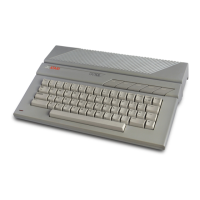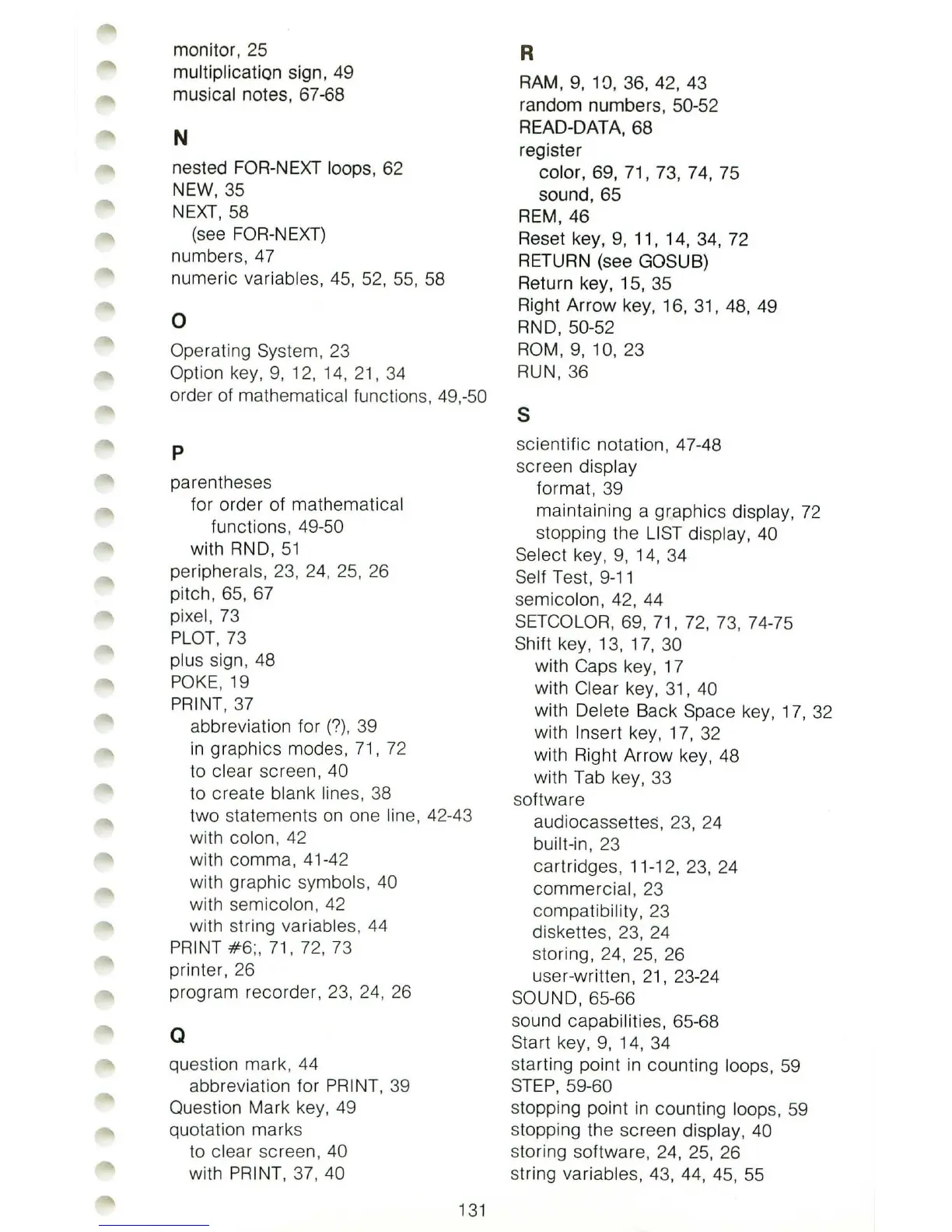monitor, 25
multiplication sign, 49
musical notes, 67-68
N
nested FOR-NEXT loops, 62
NEW,
35
NEXT
,58
(see FOR-NEXT)
numbers,
47
numeric variables,
45,
52,
55,
58
o
Operating System,
23
Option key,
9,
12, 1
4,
21,
34
order of mathematical functions,
49
,
-50
p
parentheses
for order of
mathematical
functions, 49-50
with RND ,
51
peripherals, 23,
24
,
25
,
26
pitch, 65, 67
pixel ,
73
PLOT
,
73
plus sign, 48
POKE,
19
PRINT
,3
7
abbreviation for
0)
,
39
in
graphics modes,
71,
72
to
clear screen, 40
to
create blank
lin
es,
38
two statements
on
one line, 42-43
with
colon, 42
with comma, 41-42
with graphic
symbol
s,
40
with semicolon, 42
with string
variables,
44
PRINT
#6
;,
71,72,7
3
printer,
26
program recorder,
23
,
24
,
26
a
question mark,
44
abbreviation for PRINT,
39
Question Mark key, 49
quotation marks
to
clear screen, 40
with PRINT, 37, 40
131
R
RAM,
9,
10
, 36, 42, 43
random numbers, 50-52
READ-DATA,68
register
color, 69,
71,73,
74,
75
sound, 65
REM,46
Reset key,
9,
11, 14, 34, 72
RETURN (see
GOSUB)
Return key, 15,
35
Right Arrow key, 16, 31, 48, 49
RND, 50-52
ROM, 9, 10, 23
RUN,36
S
scientific notation, 47-48
screen
display
format,
39
maintaining a graphics display,
72
stopping the
LIST
di
sp
lay,
40
Select key,
9,
14
,
34
Self Test,
9-11
se
micolon, 42,
44
SETCOLOR, 69,
71
,
72
,
73
, 74-75
Shift key, 13, 17, 30
with Caps key, 17
with
Clear key, 31,
40
with Delete Back Space key, 17,
32
with Insert key, 17,
32
with Right Arrow key, 48
with Tab key,
33
softwa
re
audiocassettes, 23, 24
built-in,
23
cartridges, 11-12,
23
,
24
commercial,
23
compatibility,
23
diskettes, 23,
24
storing, 24,
25,
26
user-writte
n,
21,
23-24
SOUND, 65-66
so
und capabilities, 65-68
Start key, 9, 14,
34
starting point
in
counting loop
s,
59
STEP,
59-60
stopping
pOint
in
counting loop
s,
59
stopping the screen display, 40
storing softwa
re,
24,
25,
26
string
variables, 43,
44,
45,
55

